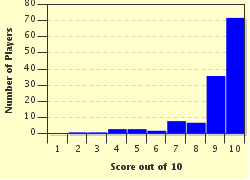Quiz Answer Key and Fun Facts
1. Asterisms are not constellations. They do occasionally occur in official constellations, like Orion's Belt in the Orion constellation. Which asterism forms part of the constellation Ursa Major?
2. The ninth largest constellation, containing two of the brightest known stars, also has the largest number of visible stars, a total of a hundred and one. What is it called?
3. How many different recognised constellations are there in the early twenty-first century?
4. Often referred to as the thirteenth Zodiac constellation, Ophiuchus is represented as a man grasping an animal represented by which other constellation?
5. It is impossible to see the constellation Ursa Minor in its entirety from the Southern Hemisphere because of one specific star found in the constellation. Which star is it?
6. The constellation Corvus contains a pair of colliding galaxies known as the Antennae Galaxies. By what other name are these galaxies known?
7. The brightest star in the sky, Sirius, is part of which constellation?
8. An annual meteor shower named the Quadrantids has a radiant occurring within which constellation?
9. There is a nebula within the constellation Taurus, categorised as the remnant of a supernova containing a rapidly rotating pulsar. What is it named?
10. Out of all the recognised constellations, only one has a name that that can be used for both fauna and flora. Its name is Apus, but what does it mean?
Source: Author
kino76
This quiz was reviewed by FunTrivia editor
rossian before going online.
Any errors found in FunTrivia content are routinely corrected through our feedback system.


